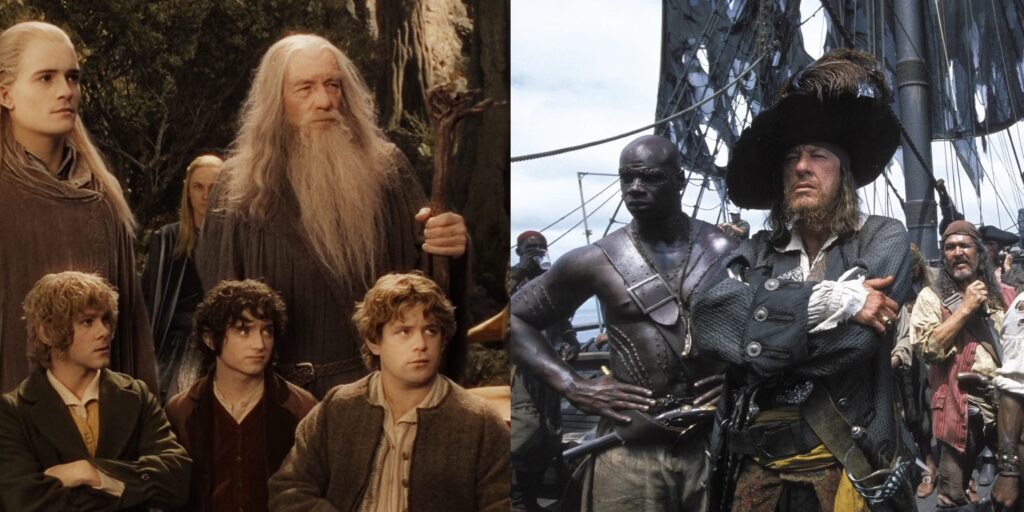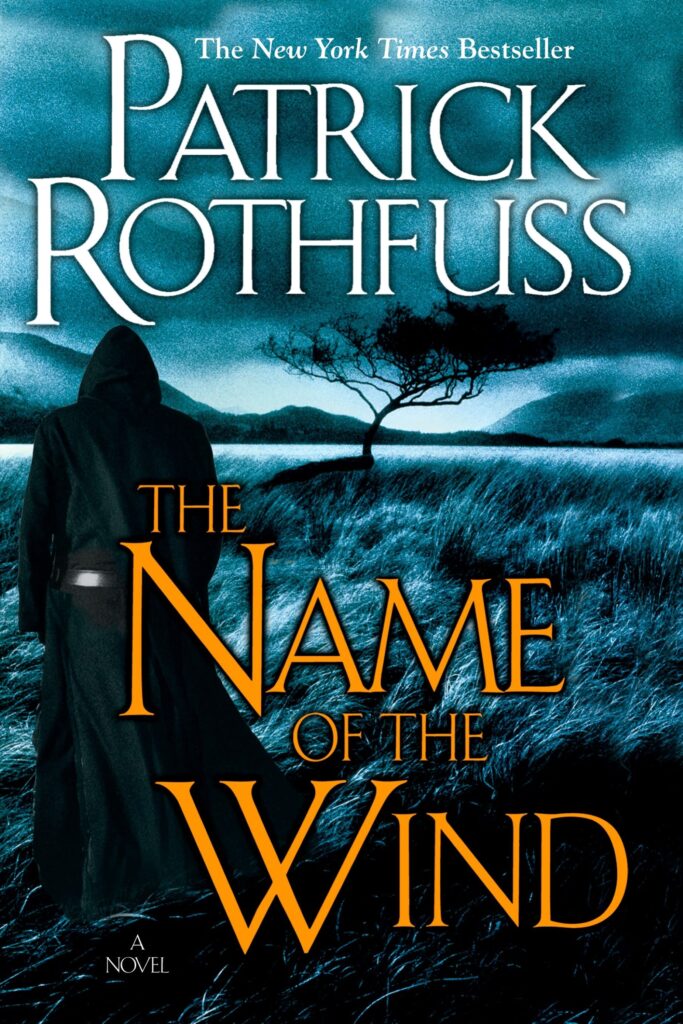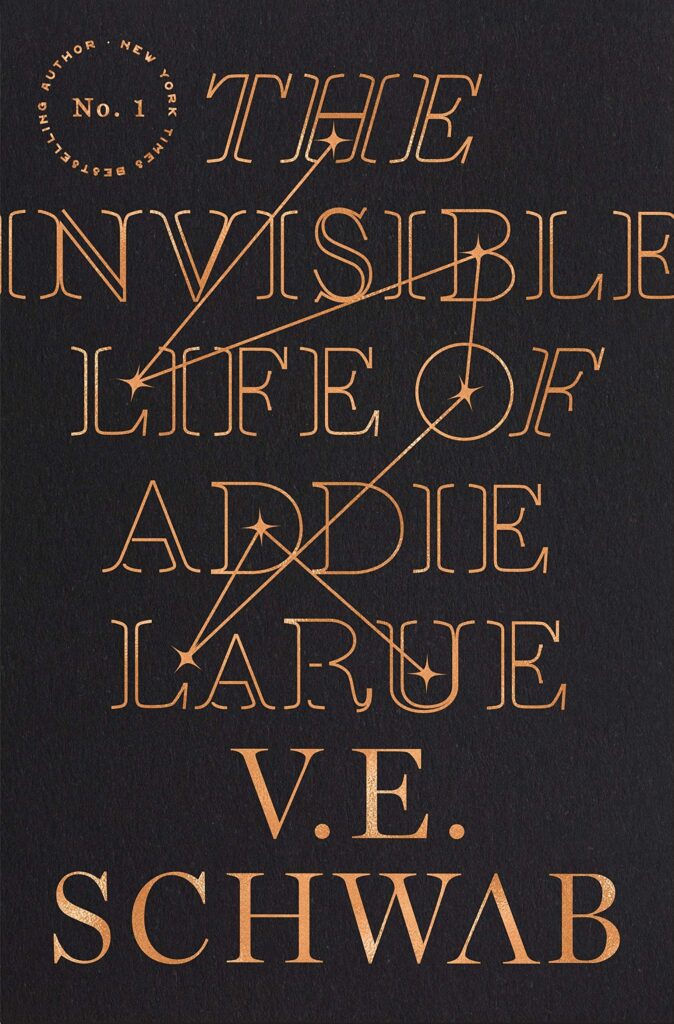With mythical beasts and complex spells, the fantasy book genre is incredibly fun to write. But with 10+ fantasy subgenres, it can be difficult to know how to market your book. High fantasy vs. low fantasy. Dark fantasy vs. fairy tales. What on earth (or Middle-earth) are you writing!?
Using incorrect Amazon book categories could mean no one finds your work, or worse, that readers are upset when your story doesn’t match their expectations.
Understanding what genre your fantasy tale fits into will help potential readers find your book and let them know what to expect within the pages.
While there are a lot of fantasy subgenres to cover, today we will discuss the difference between high fantasy vs. low fantasy (because chances are, you’re writing one of them).
Before we dive into the details of high fantasy vs. low fantasy, let’s briefly discuss the fantasy genre at a glance.
What is fantasy as a genre?
Fantasy is one of the most popular types of fiction writing. It covers a wide range of storytelling styles but generally contains magical elements. These could be special powers, new species of creatures, or complete fantastical ecosystems.
What is fantasy to an author? It’s absolute writing freedom.
Being a fantasy author allows you to create whole new worlds and ways of life – and write true magic that lets your readers disappear into your pages.
When people think of the fantasy genre as a whole, the first examples to come to mind are likely examples of high fantasy. Lord of The Rings, Wheel of Time, Game of Thrones, Eragon, The Name of The Wind… These are the immersive fictional worlds that took years of careful attention to build. They’re amazing to read, and, as you can probably imagine, incredibly difficult to write. Let’s look into it.
What is high fantasy?
High fantasy, also known as epic fantasy, is a subgenre of fantasy fiction that presents sprawling, immersive worlds completely different from our own. They have their own histories, cultures, and mythologies, often containing magical elements and fantastical creatures. Most high fantasy stories take place in a medieval-esque setting, often with familiar creatures like dragons, dwarfs, and maybe a unicorn or two.
The key aspects of high fantasy are around the scale of the novel, detailed world building, and the presence of elements that can be fantastical, such as magic, witches, and wizards. High fantasy also tends to have a grandiose scope to the novel, events that take place during one novel can have far reaching consequences impacting different worlds and civilizations. In GRR Martin’s A Song of Ice and Fire which became Game of Thrones when televised, there is frequent reference to the history of Westeros and beyond, for example how and why was the ice wall built. The white walkers are mentioned at the very start of the television series and in the first novel but it’s not until much later that the truth is revealed. That’s quite some set-up and a long time to the payoff.
But what constitutes high fantasy vs. low fantasy?
Let’s examine some differences between these two siblings in the fantasy book genre.
High Fantasy vs. Low Fantasy Explained

If we asked the average person: “What is fantasy?” They would probably start describing high fantasy. High fantasy is sometimes called “traditional fantasy” or “epic fantasy” (more on that in just a bit). These books are often quite long, with deeply thought-out magical worlds.
But low fantasy books can be just as fun to read and write. Instead of whisking your readers away into the magic, low fantasy allows you to bring the magic straight to them. Low fantasy is more closely related to urban fantasy, magical realism, and paranormal literature.
The key distinction between high fantasy and low fantasy is the level of magical immersion. High fantasy takes place in an entirely different world from our own, while low fantasy is grounded in our world with magical elements woven in. Where The Lord of the Rings is high fantasy, The Chronicles of Narnia is low fantasy.
Here are a few more comparisons to make and understand within the fantasy book genre.
- High fantasy vs epic fantasy: As mentioned above, high fantasy and epic fantasy are used interchangeably, but there are arguably subtle differences between the two. High fantasy emphasizes the fantastical setting, while epic fantasy focuses more on grand-scale conflicts and heroic quests. The Hobbit might be considered high fantasy (a whimsical journey through a magical realm), while The Lord of the Rings could be considered an epic fantasy because it intertwines human(ish) struggles and monumental battles.
- High fantasy vs dark fantasy: High fantasy (and even low fantasy) is generally understood to evoke wonder, while dark fantasy plunges the reader into the shadows. It combines elements of the horror and fantasy genres, immersing you in eerie, grim worlds where magic may exist, but it’s not exactly benevolent.
- High fantasy vs urban fantasy: Contrasting with high fantasy’s completely imagined worlds, urban fantasy is set in a more familiar setting. Picture a contemporary cityscape, modern day, all’s looking pretty normal—except ogres live in the sewers, and everyone knows and accepts this fact as par for the course.
So what divides the two subgenres, exactly? Here are some of the things that set high fantasy and low fantasy apart:
High Fantasy vs. Low Fantasy: The Setting
The single biggest difference between high fantasy vs. low fantasy is the setting.
Simply put, high fantasy books are out of this world. Literally.
High fantasy is set on another planet, universe, or alternate dimension. You may want to learn how to make a fantasy map to help your readers visualize your world.
High fantasy novels often require a bit more explanation and world-building to help readers understand new types of habitats, species, beliefs, laws, and political systems.
Low fantasy novels, on the other hand, are set on Earth. Low fantasy helps to infuse the mundane with magic. If there are werewolves and vampires hiding in the city, or a secret school of magic in a nearby forest, these are prime examples of low fantasy.
High Fantasy vs. Low Fantasy: The Characters
Writing high fantasy gives you free rein to create new species and races of creatures. There are sometimes a much larger number of characters to be found in high fantasy stories, and they are often given names that would seem unusual in everyday life.
Low fantasy characters are often inspired by mythology and folklore from around the world. Human-like mythical creatures such as shapeshifters, faeries, witches, and mermaids are all popular in low fantasy stories. Of course, they can be used in high fantasy as well!
Low fantasy stories usually center around humans, and examine how the humans react to (or use) magic in the world. Which brings us to the plot…
High Fantasy vs. Low Fantasy: The Plot
Since high fantasy novels are usually epic in more than just length and world-building – they are also epic in their themes. Think high-stakes plots of good vs. evil and saving the world. There is often an arduous quest involved, or a long, bloody battle.
Low fantasy, on the other hand, has a more intimate story arc. It tends to be more character-driven and focuses on coming-of-age stories, moral dilemmas, and personal journeys. In essence, it’s magic through the lens of humanity.
Now that you have a better understanding of high fantasy vs. low fantasy, let’s look at some examples of both subgenres in popular literature.
Examples of High Fantasy Books
Lord of the Rings series by J.R.R. Tolkien

J.R.R. Tolkien is lovingly known as the father of modern fantasy, and no list of high fantasy book series would be complete without the Lord of the Rings. Tolkien’s incredible prose paints a detailed picture of Middle-earth in strife – with one of the greatest wars of good vs. evil ever put to paper.
A Court of Thorns and Roses (ACOTAR) series by Sarah J. Maas

Romance and New Adult writers are creating a popular new “Romantasy” take on the high fantasy genre – and Sarah J. Maas has made her mark on the movement.
Loosely inspired by Beauty and the Beast, ACOTAR is a fun faerie land romp that takes you on a wild ride, with a love story at the heart of epic battles to save the world from evil rulers.
A Song of Ice and Fire series by George R.R. Martin

While the Game of Thrones TV series may have ended in epic failure, there is no debating that George R.R. Martin’s books are plain EPIC. A Song of Ice and Fire is written from the point of view of a whopping 24 characters to date – and George makes you care for all of them.
Never have politics, action, and fantasy been better intertwined. A Song of Ice and Fire has something for everyone. (If only he would finish the darn series already.)
The Witcher series by Andrzej Sapkowski

Translated into over 37 languages, and spawning several video games and Netflix TV shows, The Witcher books by Andrzej Sapkowski have made a lasting impression on the fantasy book genre.
Geralt (the White Wolf) of Rivia is a witcher, who travels the globe seeking payment for slaying monsters – but the political intrigues he finds himself in may be even more deadly.
The Kingkiller Chronicle by Patrick Rothfuss

This series follows the journey of a musician slash adventurer named Kvothe. The insane attention to detail in the worldbuilding, as well as some mind-bending storytelling techniques, make this series iconic.
The Earthsea Cycle by Ursula K. Le Guin

This high fantasy series brings magic systems to a new level. The attention to detail and intricate magical system Le Guin creates will keep readers immersed and spellbound through the entire thing.
Examples of Low Fantasy Books
Harry Potter series by J.K. Rowling

Harry Potter needs no introduction. Nothing has swept the globe quite like Hogwarts fever, and whole generations were devastated when they didn’t receive invitations to the school of magic on their eleventh birthdays. The tale of “the boy who lived” simply shouldn’t be missed.
Percy Jackson and the Olympians series by Rick Riordan

If you didn’t grow up on Harry Potter, you were probably raised on Percy Jackson. Percy Jackson and the Olympians is a fun, coming-of-age adventure series inspired by Greek mythology. Liberal humor, fast pacing, and heartfelt characters make this series an instant classic.
The Invisible Life of Addie LaRue by V. E. Schwab

Plenty of people who don’t traditionally read fantasy lapped up The Invisible Life of Addie LaRue. This novel is the perfect blend of history, art appreciation, dark romance, and fantasy that makes it agreeable to the majority of readers.
Tips for writing high fantasy
If you’re ready to write your own fantasy, here are some elements you’ll want to consider.
1. Worldbuilding
The most pivotal element of a fantasy story is the worldbuilding. This includes the magic system, laws and government, religion, mythology, economy, culture, and everything else that exists inside of a world. This is why fantasy books are one of the most time-consuming to write.
Read this comprehensive guide to building your fantasy universe.
2. Characters
And what’s a world without creatures and people to occupy it? Populate your world with relatable characters, each with their own desires and their own journey to go on. Heroes, villains, and companion characters (including creatures) should be multidimensional and memorable (and maybe relatable, but that’s not as important).
3. Magic system
While the magic system is technically a part of worldbuilding, the magic system is VERY important in a fantasy story. It should be coherent and well-defined (unless intentionally otherwise), as well as consistent. Magic has rules, and while those rules can be anything you’d like them to be, having a consistent, grounded magic system will help with reader immersion and creating an environment they can trust and almost “believe in”.
4. Language and tone
The language and tone you use in your narrative style can change everything about the story. You could take an identical list of plot beats and character arcs, but give one story a serious narrative voice and one a comical narrative voice, and you have two ENTIRELY different books. Match your language and tone up with what your intention and goals are for the story, and try to keep it consistent throughout.
5. Nail the atmosphere
When we refer to “atmosphere” in a literary space, we’re referring to the feeling of a setting. Not the setting itself, not the tone of the scene, but the way the setting feels to the reader. This can help you guide readers to feel what you want them to feel. In fantasy, we’re traveling through all of these new, wild places, so having a strong grasp of how to write atmosphere can help you let the reader know how they should feel in each setting. Learn how to create a strong atmosphere here.
6. Start strong
The opening of any story is important, but in fantasy, we’re dropping the reader into a totally new environment and asking them to catch up with a quickness. Your opener should introduce questions to hook interest, but it should also help to settle the reader into the story, letting them have enough context and information to understand what’s happening, where we are, and what the general vibe is from the jump.
7. Build memorable creatures
The creatures and monsters of a fantasy story are often the most compelling, memorable figures. Whether you’re using the classics or fully inventing your own, taking the time to build fantasy creatures that are interesting in physical form, intelligence, and intent will make your world seem richer and more complete.
8. Create outside content
This is totally optional and has little to do with the actual writing of a fantasy book, but when your world and creatures are inventions of your imagination, it can be nice to have some physical representations for yourself and your readers. This might be accomplished through character portraits, fantasy maps, or a creative book cover.
9. Themes and allegory
If you think themes, morals, and allegories are only something to worry about in literary books, you’d be wrong! Genre writing also employs the use of themes and allegories. While we might be reading about elves and dwarfs at war over the only quarry that still has a mystical type of stone—we know we’re reading about something human, too. Fantasy books often employ themes of war, discrimination, political concepts, and many more topics that are hard or boring to think about directly, but add some centaurs and suddenly you’ve got some interest. While themes are not the most important element of a story, a fantasy narrative becomes all the richer when it can equate to real human nature.
In the realm of high fantasy, the borders of creativity are only limited to what you can think up. It’s a genre that invites readers to immerse into mystical, magical escapism and writers to push the boundaries of their own imagination.
High Fantasy vs. Low Fantasy: What Is Your Genre?
Deciding whether to write high fantasy vs. low fantasy is a very personal choice. When you’ve worked so hard at self publishing, the last thing you want to do is mislabel your book genre.
If you’re building an entire world with a high-stakes plot line and even higher page count, high fantasy is your cup of tea.
If you’re creating a cozy read, exploring a new view on humanity, or sprinkling some magic into your favorite earthly neighborhood, then shoot for low fantasy.
Finding the right niche and labels for your novel gives it the very best chance at succeeding with your readers. But whatever fantasy subgenre you zero in on, you’re sure to add a touch of magic to someone’s day.
